Are you looking to repair your galvanized pipes? Over time, you may find that your pipes are starting to restrict water flow. In that case, you will want to replace that section of pipe. We have done all of the research and have instructions on how to do this repair.
How to repair a galvanized water pipe with PVC:
- Cut out the galvanized pipe
- Cut the PVC pipe to size
- Apply sealant to the pipe ends
- Put the new couplings onto the pipe
- Install the PVC pipe
Galvanized pipes are popular for resisting corrosion on the outside but can become rusted and clogged on the inside. PVC is a better alternative because it is more resistant to corrosion. Keep reading for instructions and tips on installing your new PVC piping.
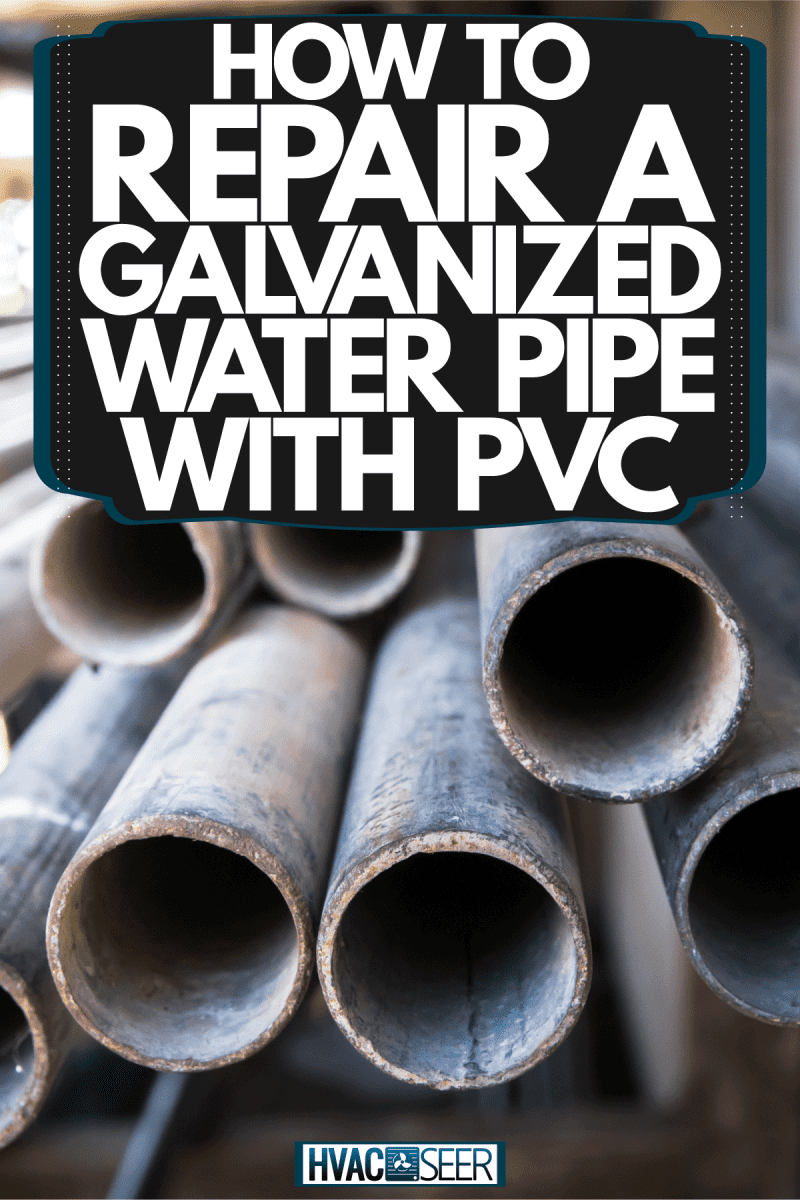
Steps for Repairing a Galvanized Water Pipe with PVC
1. Cut out the galvanized pipe
To begin your repair, you will need to shut off the water supply to the working pipe. That is just for added security against leaks and flooding. After the water is off, examine the galvanized pipe.
You will need to decide if you will remove the entire length of the pipe or just a small area. If you are going to replace a small section of pipe, you will need the proper tools.
Click here to see this pipe cutter on Amazon.
To cut the pipe, you will need safety gloves, goggles, and a cutting tool. You can use a pipe cutter, a hacksaw, or a rotary saw. The easiest way would be to use a pipe cutter; it can give you a clean and even cut around the pipe. Cut the pipe reasonably close to the fittings. Just make sure you leave enough room for the coupling to be secure.
This video shows how to use a metal pipe cutter:
If you are going to remove the entire pipe, you can remove it by the fittings on either end. To do this, you will need two wrenches. Place one wrench on the union on the loose end of the pipe and the other on the opposite side of the pipe.
Turn the wrench on the union counterclockwise while holding the other one in place. Once one side is free, you can unscrew the pipe from the fitting.
2. Cut the PVC pipe to size
Next, you will need to cut the PVC pipe to the correct size. An easy way to do this is to use the removed piece of pipe as a guide. Otherwise, you can use a tape measurer to find the length needed to fill the gap in your pipes.
https://www.istockphoto.com/photo/plumber-cutting-pvc-pipe-gm184655674-17817830
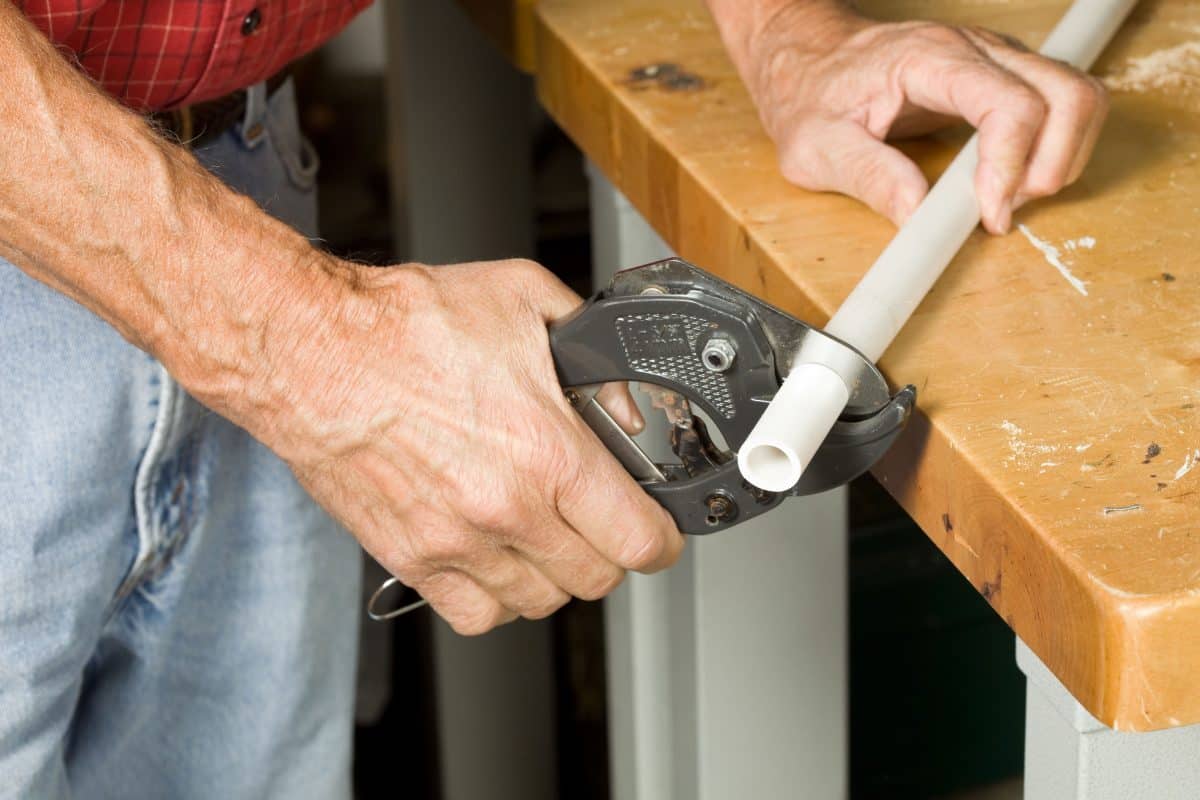
To cut the PVC pipe, you can use a similar method to how you cut the steel pipe. A pipe cutter will also do the neatest job of cutting PVC. However, it is a lot softer than steel and can be sawed through easily. When purchasing your PVC pipe, try to find the same diameter as the galvanized pipe you are repairing.
3. Apply sealant to the pipe ends
Next, you can prepare your galvanized pipe for the PVC section. You will need a new connector for both sides of the PVC pipe. There are a few different kinds of couplings to connect pipes.
You will need to apply a sealant to get a waterproof seal no matter what coupling you use. There are temporary and permanent sealings available. You should use a permanent kind for this project.
Click here to see this pipe sealant on Amazon.
When choosing a sealant, make sure it is good for use on both metal and PVC. You can use a brush to apply the product around the end of the pipe receiving the new coupling. For added security, you can also put some on the inside of the coupling. Be sure to check the directions for how long it will need to dry.
4. Put the new couplings onto the pipe
After the pipe is prepped, you can put on the new couplings for the PVC. If your galvanized pipe is threaded, you can find a threaded PVC connector that will create a leak-free joint.
Click here to see this male PVC adapter on Amazon.
For threaded metal to PVC transitions, the female part of the connector needs to be metal. You can screw a threaded PVC pipe into a metal fitting with no problem. If you screw metal into PVC, it can cause cracks and leaking.
How do you connect galvanized pipe without threads to PVC?
If your pipe is not threaded, you can still use this method to replace your pipes. You will need to use a rubber coupling that has clamps.
Click here to see this coupling on Amazon.
If there is a difference in wall thickness, you can find a coupling to accommodate that. There are different thicknesses of rubber fittings available. Rubber couplings are just as secure as threaded couplings.
5. Install the PVC pipe
Lastly, you can insert the PVC pipe into the fittings. Before installing, apply more sealant on each end to get a secure hold. After the PVC is installed, you can turn the water back on.
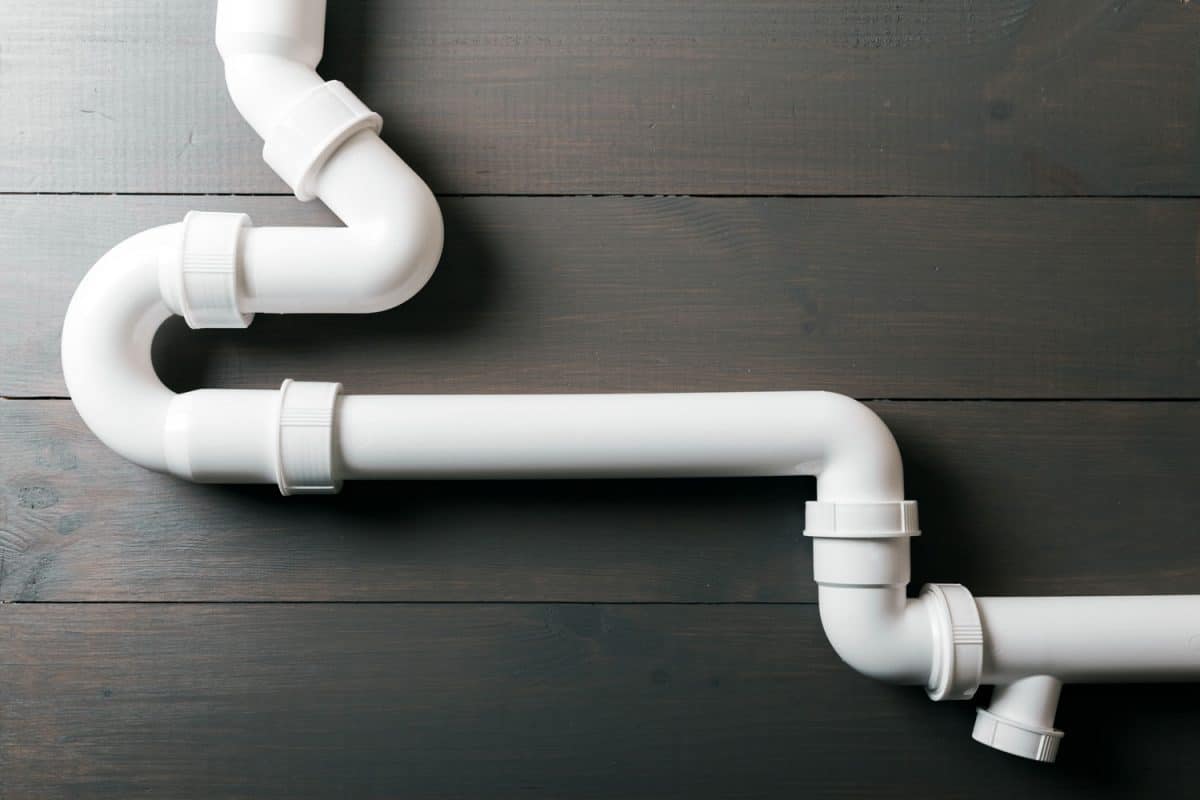
If the fittings are threaded, you will need to screw the pipe in clockwise. If you use a rubber fitting with clamps, you can slide the pipe into the fitting. To secure these rubber couplings, use a wrench to turn the bolts and tighten the metal rings.
The following video demonstrates how to use a rubber coupling to join PVC and steel pipes:
Can you glue PVC to galvanized steel?
You will find a lot of adhesives marketed for use on PVC. These glues are best for adhering two pieces of PVC plastic together. Unfortunately, they will not be able to bond the plastic to metal.
The best way to connect PVC and metal is to use couplings. Adapters that are half metal and half PVC, full PVC, or rubber are the best choices for this project.
Do I need Teflon tape on PVC to metal?
Teflon tape is used very often in the plumbing world. It is used to give your pipe joints a water-tight seal. While that is important, you should not use Teflon tape on PVC. It should only be used on metal-to-metal connections.
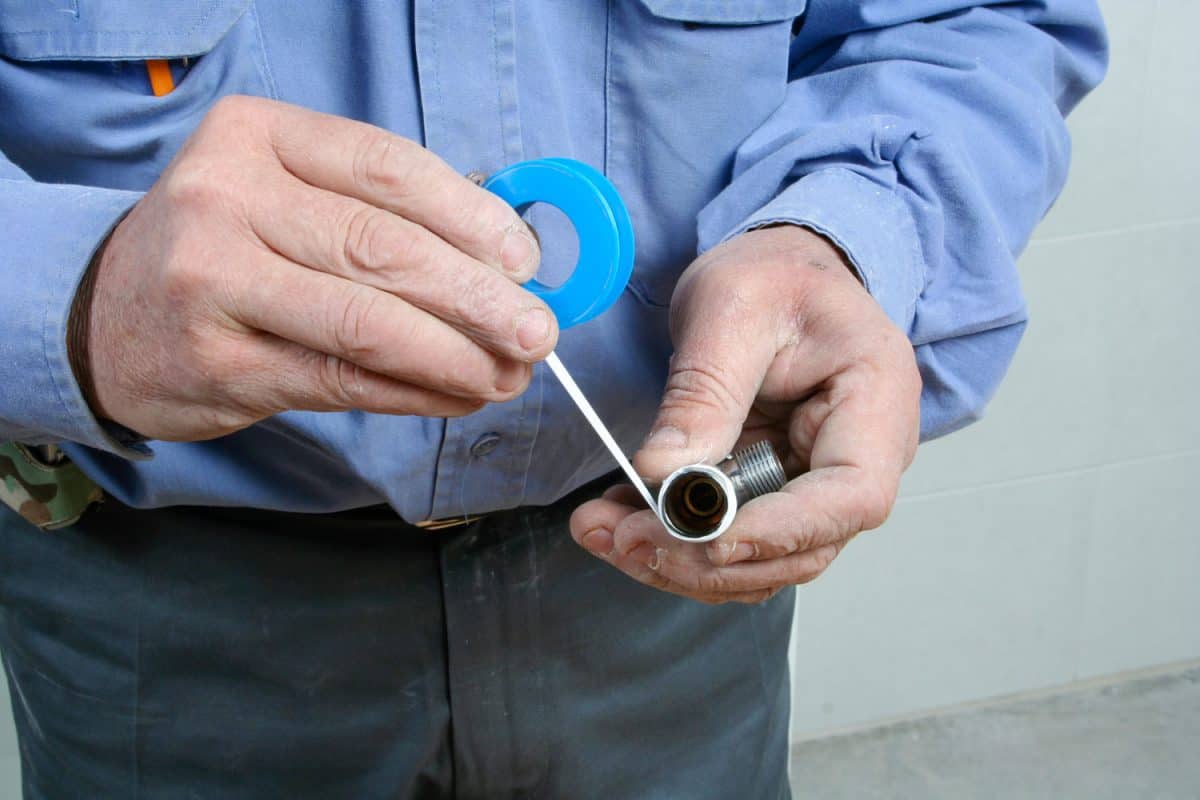
Connections involving PVC are a lot easier to tighten. Using Teflon tape can cause you to overtighten the threaded joints, which will lead to cracking and leaking over time. For PVC to metal connections, the best thing to use is a sealant.
How do you seal PVC thread to metal?
Sealing your threaded connections is the best way to prevent leaking. To seal the threads, you will need a good sealant, as mentioned earlier. The sealant should be non-hardening, compatible with plastic, and non-slippery.
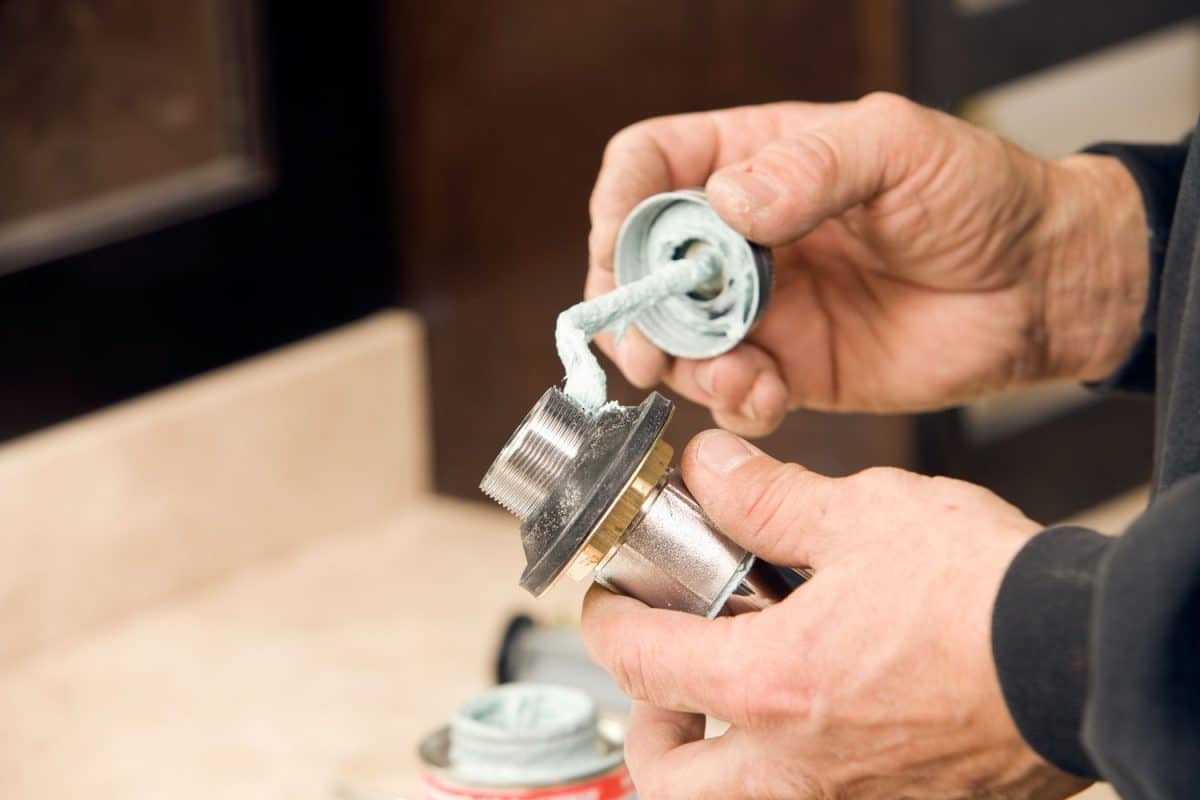
Apply the sealant to both the female and male threaded parts and screw them together. On average, it will take around twenty-four hours for the sealant to fully cure.
In Closing
This project is relatively simple if you have some plumbing experience. The most important part of this project is having the correct tools. Using a heavy-duty pipe cutter will make removing your galvanized pipe quick and easy.
For metal to PVC connections, rubber couplings are the best option. Even if your pipes are threaded, this coupler will be able to form a waterproof connection. And remember, you will need a sealant to keep those new joints tight.
For more tips on galvanized pipes, check out our article on how to prevent galvanized pipes from rusting. Water pipes in certain climates or locations in the house can be prone to freezing. Read our article on how to prevent laundry pipes from freezing for guidance.




